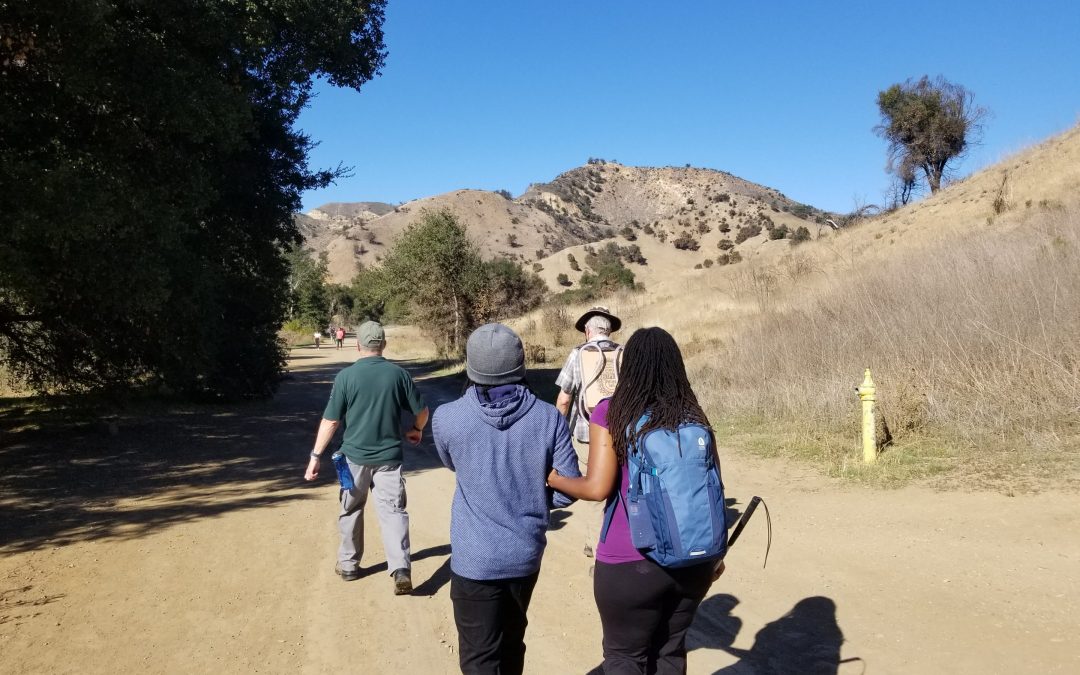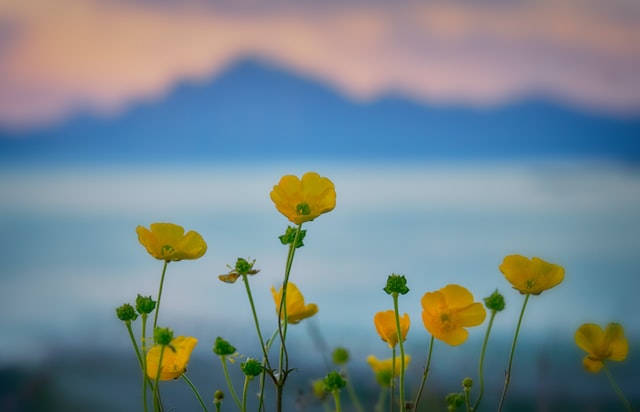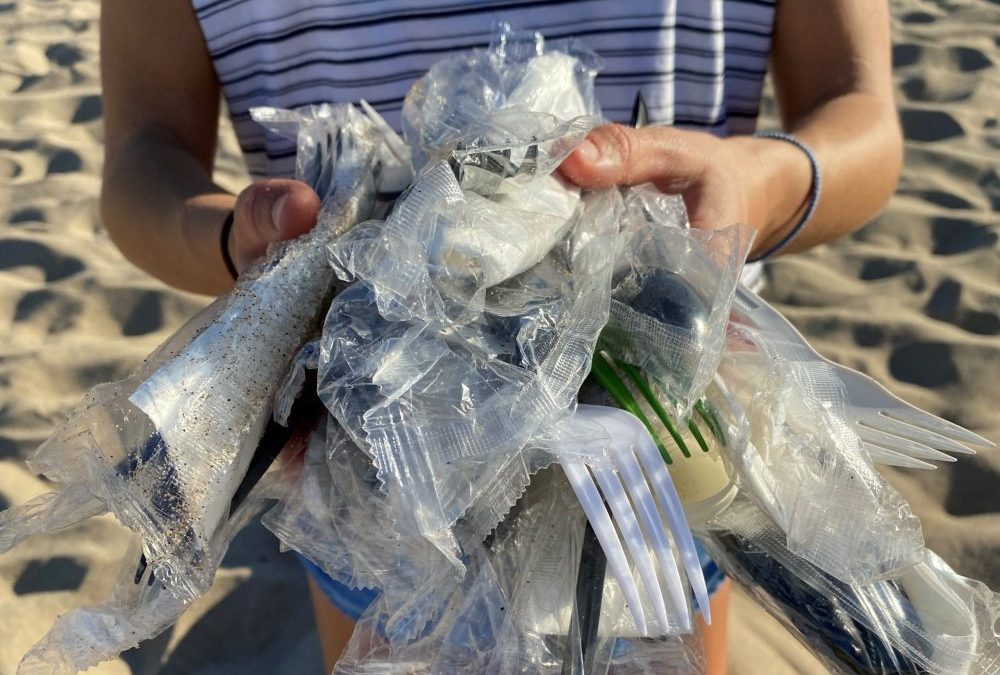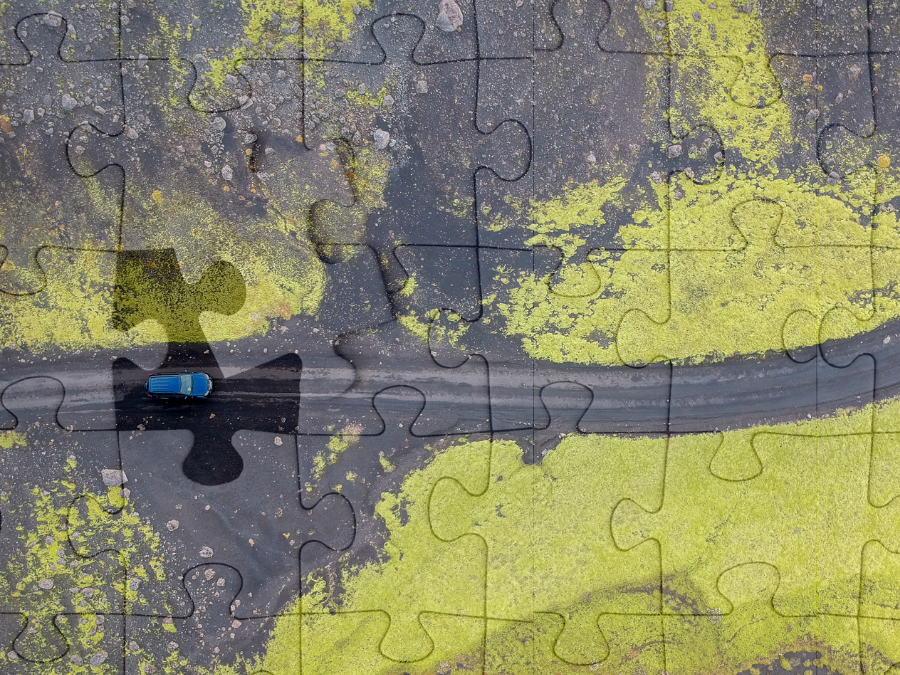
by SCLA | Oct 27, 2022 | Newsletters, Parks
By Will McWhinney
Time spent in nature has been proven to offer many physical and psychological benefits. But in many cases those benefits aren’t available to those who don’t drive cars. That includes the impoverished and the disabled.
The Sierra Club was founded with a mission to “render accessible” the mountain regions of the Pacific west. Locally, club entities such as Inspiring Connections Outdoors (ICO) and the Central Group recruit volunteers and raise money to take poor children and visually impaired adults on mountain trips. These trips are necessarily limited in size and frequency, and by the tastes of the leaders. People from all walks of life should have opportunities to access nature on their own terms.
In 1911, when the Angeles Chapter was founded, anyone (with enough cash) could take a train up into the front range of San Gabriel Mountains. But travelling deeper into the range was very difficult due to lack of roads and trails. Nowadays, there are many more ways to visit nature but access is often limited to people who own and drive cars.
Among the challenges to greater access are costs, reliability, and education. An initiative by U.S. Rep. Judy Chiu, D-Pasadena, will fund a shuttle from the Metro L Gold Line for some weekend trips to the top of Mt Wilson and trailheads along the way. Nature For All, which promotes access to the local mountains, is seeking a shuttle for Highway 39, following the San Gabriel River gorge. Because of the expense, these shuttles have to be heavily subsidized and so the programs struggle with steady funding. A shuttle which has received consistent support travels to the Baldwin Hills Scenic Overlook and the Kenneth Hahn State Recreation Area. However it has been unreliable. Micro Metro, an on-call service being tested in selected MTA areas, will take small groups to a few trailheads, including the Cobb Estate for the Sam Merrill Trail.
Access to trails on the edge of the urban core is uneven. Mass transit routes tend to avoid thinly populated areas, of course. Rideshare services can be expensive, unreliable, and complicated, especially for a group. The local paratransit service, ironically named Access, is limited to places with street addresses that are near mass transit routes, and is also unreliable. Small administrative changes to alter stops and routes, for example, could make near-urban nature much more accessible. Reliability is important because people need to trust that they’ll be dropped off and picked up again in the right place at the right time.
Another challenge is educating the public about the access opportunities that exist, along with the basics of travel in nature. Providing that information should be relatively low-cost and low effort for transportation services and land managers.
What can we do? Advocate to agencies to prioritize access to nature, and educate people about the opportunities where they exist.

by SCLA | Oct 27, 2022 | Newsletters, Parks
By Amanda Stemen
Climate change and mental health are two of the greatest areas of concern right now. This isn’t a mere coincidence given that our relationship with our environment greatly impacts our mental health and overall well-being. Time spent in nature, in any form, makes us feel happier, more peaceful, rejuvenated, and connected to something greater than ourselves. There’s good reason for this. Green space (E.g., plants, trees, grass, flowers) has been scientifically shown to heal our brains. We fatigue our brains with excessive directed attention, (Through urban living, busy lives, etc.) which causes actual brain damage, manifesting itself as heightened levels of anxiety and depression. Green space doesn’t require directed attention, allowing our brains to heal that damage. That’s why we feel better after spending some time outdoors, literally our brain has been healed.
Nature reduces stress and anxiety, decreases depression, improves overall mood, reduces anger, lessens symptoms of PTSD, ADHD, and addiction, improves information processing, focus, and memory, increases self-esteem and sense of empowerment, and boosts productivity and creativity. Nature also increases and improves our social connections, as well as decreases antisocial behaviors. Green space itself is directly linked to lower crime and economic growth, which improve our overall well-being, both as individuals and communities. Spending time in nature also improves sleep, decreases illness and recovery time from injury, reduces pain, improves cardiovascular and other body systems’ health, and is useful in weight loss and management. Moving our bodies in the outdoors further supports our physical and mental health.
Since more and more people are living in urban environments and the availability of green space is decreasing worldwide, it’s becoming increasingly difficult to access the nature that provides these benefits. This is particularly problematic for those living in low-income areas (Who are already at a higher risk for poorer mental and physical health.) where there tend to be fewer parks, and existing ones aren’t always well maintained or safe to be in. Lack of easy access to nature, along with rapid advances in technology, can lead to forgetting our intimate connection to our environment. Taking care of our mental health is also something we rarely think about until we, or someone close to us, become ill. Even then, it’s hard to know what to do and acting on any issue can sometimes feel so overwhelming that we don’t do anything.
With all these benefits, we need to take what actions we can to preserve and create equitable green space access for all. It’s our responsibility to educate ourselves and once we’ve done that, educate those around us. Talk to family, friends, and neighbors about the benefits of availability and access to green space. Communicate with professional organizations and policy makers so that even if they’re educated on the issue, they realize that it’s also important to others. Most importantly, spend time in nature and encourage others to do the same, to physically demonstrate the value of such spaces. It all sounds so simple, yet it’s often the simplest acts that make the biggest difference.

by SCLA | Apr 19, 2021 | Explainers, Newsletters
By Anna Schniepp
If you have ever spent time in the Zero Waste space on the internet, you may have come across perfectly curated minimalist kitchens with no plastic in sight. The reality, however, is that this goal is unrealistic for most people. Not everyone has access to bulk stores, farmers markets and specialty shops that offer plastic-free goods. Moreover, these beautiful zero waste households ignore the fact that the problem is not consumers who have little to no say how their products are packaged, but the companies that continue to prioritize plastic packaging. So, what can we do?
Consider a Trash Audit: If you’re a fan of the outdoors, it’s not an uncommon sight to see wrappers, bottles, tissues and more littering everything from neighborhood parks to remote mountain vistas. When you visit an outdoor space, consider bringing a trash bag and collecting stray trash (and remember to dispose of your own trash correctly!) and take it to the next level with a trash audit. Keep track of frequently spotted brands when picking up trash and email those companies about their contributions to the ongoing waste problems.
Contact Brands You Love: Is there a particular product that you love but it bugs you that it comes in plastic? Email the company and let them know your thoughts! Caving to consumer pressure, many brands are beginning to offer plastic free alternatives as it becomes clear that it is a priority for their customers. Commit to sending one or two emails a month and encourage your friends to join in!
Support Legislation: Keep an eye out for upcoming proposals that focus on reducing our reliance on plastics. Here in Los Angeles, the “Skip the Stuff” policy to prevent unwanted plastic utensils being added to take-out orders has been approved by the City. Keep the momentum up by contacting your representatives to thank them for supporting the motion! And on a federal level, let your representatives know that you support policies like the Break Free From Plastic Pollution Act.
Above everything, be kind to yourself. Unless you are a billionaire with a fleet of private jets, a mega mansion, or a multinational corporation that actively contributes to harming the planet, you are not the problem. Most of the damage being done to our planet is not the result of that steak you ate for dinner last week or that bottled water you bought because you forgot to bring your reusables, but the economic systems in place that prioritize cheap, unsustainable practices. Keep making changes on an individual level and this Earth Day join us in considering ways to make our low waste, plastic-free journeys a catalyst for positive changes in our communities and our world.

by SCLA | Apr 19, 2021 | Explainers, Newsletters
By Aaron Small
Our family finished a lot of puzzles to pass the pandemic time. The first rule? Start with the edges to give the puzzle its structure and shape.
If solving environmental issues on Earth Day was a 10,000 piece puzzle, you’d likely find sustainable transportation and the future of mobility along its edges. These two key elements are the backbone and solution to a myriad of challenges we face as a planet.
This year, the Biden Administration has ambitious plans around infrastructure. Like Lyndon Johnson’s sweeping reforms in the 1960s (Clean Air Act, Civil Rights Act) and FDR’s New Deal, we shouldn’t shy away from big ideas to restore balance and make an impact.
So how do we do it?
The first step would be to rethink how we get around. Internal combustion engines are quickly becoming relics of a polluted past. While electric vehicles show promise with near-zero emissions, they are not our silver bullet to solve climate change and transportation problems. EVs are still cars. Cars bring congestion and traffic violence. And the clock is ticking. We can’t replace internal combustion cars with electric cars fast enough to make enough of a difference.
In Los Angeles County, two-thirds of all travel is less than five miles. Bikes, scooting, and walking are far better options than taking a car for most short trips. That means digging the bike out of the garage and braving the streets for a spin.
Easier said than done.
To usher in a cleaner world where bikes are the go-to option, we need a safer and dependable infrastructure to allow that world to thrive. We need mobility lanes, bus lanes, and public transportation that’s efficient and reliable.
We need neighborhood streets to be places where kids can play and people can stroll – not highways where humans live in fear of getting struck by cars.
We need to make e-bikes more affordable. Electric bikes make getting around by bike accessible to many, but they’re too pricey to be popular. Big moves need to be made: rebates and subsidies – like those the government provides to prop up the EV industry – are necessary. E-bikes may be the most significant and smartest bet we can make as a society.
We need to rethink parking. America is a car country, but the world is changing, and America must change with it. With the boom of micro-mobility options and ride-sharing apps, people are driving less. With fewer cars, we need fewer parking spaces. The astonishing amount of concrete devoted to cars is absurd; with our current housing and climate crisis, we simply don’t have the space for all that empty space.
Just imagine a world with less parking. Neighborhood parks for every corner. Protected bike lanes for our children. Pedestrian plazas for communities to enjoy.
Like a winter puzzle, solving these challenges requires many hours, and many hands putting in the work. But this is our planet. And it’s up to us to figure it out.
Aaron Small is a volunteer at Streets For All, a nonprofit building a transportation revolution in Los Angeles. Follow him @TheAaronSmall

by SCLA | Apr 19, 2021 | Newsletters
By Ileana Wachtel
Wildfires have become a constant in the life of most Californians; they’ve caused massive destruction to homes, lives, livelihoods and habitat, increased greenhouse gases, and negatively impacted biodiversity. The sweeping pace and colossal severity of the fires California endured in 2020 – more than 8,200 fires ravaged over 4 million acres – exacerbated by weeks of dry, hot conditions was a stark reminder of how fast climate change is accelerating and putting California at the precipice of a new era of wildfire impact.
And 2021 isn’t looking much better, given the little rainfall the state has experienced so far. According to a report in the San Francisco Chronicle, “California is barreling toward its driest and most fire-prone months,” increasing the number of fires per month. In the month of January, there were 297 wildfires, compared to 97 wildfires in January 2020.
Experts describe this as the “new normal,” where historic wildfire buffers such as 12-lane freeways now fail to stop wind-driven wildfires. The 2018 Woolsey fire jumped the 101 freeway, and the 2017 Thomas fire sped past 70 miles of fuel breaks and three major highways. The economic toll mirrors the loss of life and habitat devastation these fires cause. In 2020 the cost was over $12.079 billion, including over $10 billion in property damage and $2.079 billion in fire suppression costs.
Legislators have yet to pass a law that would prohibit building in Very High Fire Hazard Severity Zones, which numerous scientists and experts have touted as the most effective method to stop more destruction and death, particularly since approximately 95% of fires the California Department of Forestry and Fire Protection responds to are caused by humans. Alexandra Syphard, senior research scientist at the Conservation Biological Institute, and other experts told the Los Angeles Times, “to stem the escalating loss of life and property, California must curb development in high fire-hazard zones.”
State Sen. Henry Stern’s bill, SB 55, however, is poised to do just that. It would prevent housing construction (new development) in fire hazard severity zones “unless there is substantial evidence that the local agency has adopted a comprehensive, necessary, and appropriate wildfire prevention and community hardening strategy to mitigate significant risks of loss, injury, or death.”
On April 8, Governor Newsom unveiled a $536 million funding plan focused on prevention measures. Legislators have put forth several bills that also address prevention tactics, including:
SB 45 – Climate Bond – Portantino would enact the Wildfire Prevention, Safe Drinking Water, Drought Preparation, and Flood Protection Bond Act of 2022.
SB 63 – Fire Prevention – Stern would create a fire resiliency corps and give grants to help people harden their homes against wildfires.
SB 12 – Planning and Zoning – McGuire would require a city or county that contains a very high fire risk area to amend the land use element of its general plan.
AB 642 – Wildfires — Friedman would require the Director of Forestry and Fire Protection to identify areas in the state as moderate and high fire hazard severity zones.
The Sierra Club Wildland Urban Wildfire Committee focuses on addressing land use planning and other issues related to the increasing intensity and frequency of wildfires in the Wildland-Urban Interface (WUI). To that end, our committee initiated a resolution adopted by the Sierra Club on August 22, 2020, that “supports policies that prohibit new building in Very High Fire Hazard Severity Zones, consistent with established Sierra Club infill policy, to respond to increasing intensity and frequency of devastating wildfires on lives, habitat, property, infrastructure, and the environment.”
While prevention measures are effective and needed, the dangers of continuing to build in Very High Fire Hazard Severity Zones are undisputable. If we are going to stymie the destruction, death, and loss of habitat from wildfires, we must stop building in the WUI. And, there is hope: “Since we humans are the source of most fires, we are also the solution to reducing the number of costly and damaging fires,” according to UMass Amherst researchers.
Right now, every day is Earth Day and presents an opportunity to take action and push for bold, transformative legislation that both helps combat wildfires now and plants the seeds for a sustainable future. For all Sierra Club Earth Week actions, click here.
Ileana Wachtel is a member of the Sierra Club Wildland Urban Wildfire Committee, a media strategist and communications expert.





